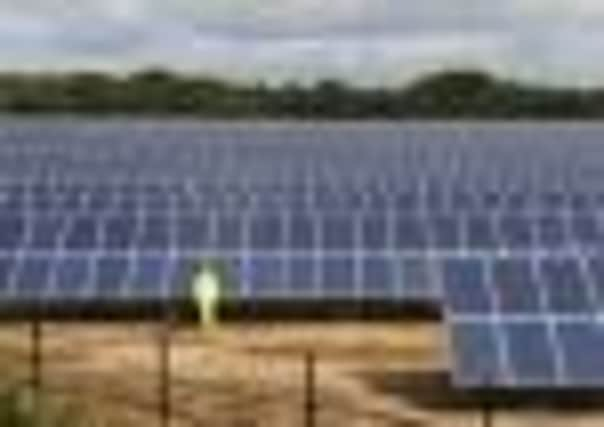21,000 panels create a solar park in sunny Yorkshire


Dodds Limited is submitting plans to East Riding Council for the £5m farm just outside the village of Ottringham, in Holderness. The farm, just off the A1033, will consist of 21,000 solar photovoltaic panels manufactured in China. Developers say the farm will be barely visible from the roadside, and sheep will graze in the solar park to keep the grass down.
Business development manager Martin Bleasby said: “We are hoping it will be the first of many. It is going to be a landmark site which will hopefully attract more investment into the area - proof that solar photovoltaic does work this far North.”
Advertisement
Hide AdAdvertisement
Hide AdThe park will cover 34 acres of agricultural land, with non-reflective, south-facing panels mounted on steel frames set in concrete foundations.
Depending on the planning process, the farm, which would create 5MW of energy, producing sufficient electricity to power 1,385 homes a year, could be operational by next April.
Hull Friends of the Earth co-ordinator Sue Jolliffe said: “On the face of it, it sounds fine - a local solution to a problem. This sort of scale is more acceptable - you need a mix of all different types of renewable energy to fill the gap.
“You are not disturbing the environment - having to dig great holes in the ground. But we wouldn’t want to see the countryside covered in them, just as you wouldn’t want the whole countryside covered in wind turbines. Agricultural land is at a premium - we need it for food.”
Advertisement
Hide AdAdvertisement
Hide AdDodds has already met local councillors and hopes to stage a “meet the buyer” event for companies who could provide services during the construction of the solar farm.
Mr Bleasby said: “We will be holding public meetings to discuss any concerns. It is minimal maintenance, it won’t increase traffic much once it is operational, it is not unpleasant to see. You will hardly see it from the roadside, because the land is quite flat and the hedge is quite high. You will probably only see it if you’re on a double decker bus.”
South East Holderness councillor Arthur Hodgson said he thought they were more acceptable than wind turbines which were going up in the area “faster than you can sneeze”.
He said: “They are quite bland - how many times do you turn round and see panels on roofs? My only concern is the loss of good arable land.”
Advertisement
Hide AdAdvertisement
Hide AdGovernment changes to subsidies has made it more attractive for investors to put their money in large-scale schemes. Capital costs have also plunged by 50 per cent in just a year, as a result of increasing competition.
A spokesman for the Solar Trade Association said: “Larger solar farms are becoming more common and the main reason for that was until recently feed-in tariffs offered a more generous return than renewable obligation certificates. It made more sense to put them on peoples’ houses than on a field. Now the feed-in tariff has come down to a level where it is basically equivalent to a renewable obligation certificate and so that means developers can benefit from the economies of scale and it makes more sense to do larger scale than small scale.”
Dodds, a family company of roofing contractors, moved into the renewables sector more than two years ago. The company is relocating to Bainton where it is due to unveil East Yorkshire’s first renewables technology showcase, where people can see working examples of solar PV and biomass boilers. It is currently selling around 5,000 panels a month, mainly to commercial and agricultural businesses. There are already a number of large-scale solar farms in the UK, including the 5MW Langage Solar Park and Toyota’s 4.6MW plant in Burnaston in Derbyshire.